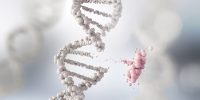FREQUENTLY ASKED QUESTIONS (FAQs)
What is BRCA1/2 mutational testing?
BRCA1/2 mutational testing is a type of genetic testing that looks for changes or mutations in the BRCA1 and BRCA2 genes. These genes are associated with an increased risk of developing certain types of cancer, such as breast and ovarian cancers.
According to the World Health Organization (WHO) (2021), Breast cancer arises in the lining cells (epithelium) of the ducts (85%) or lobules (15%) in the glandular tissue of the breast. Initially, the cancerous growth is confined to the duct or lobule (“in situ”) where it generally causes no symptoms and has minimal potential for spread (metastasis).
Over time, these in situ (stage 0) cancers may progress and invade the surrounding breast tissue (invasive breast cancer) and then spread to the nearby lymph nodes (regional metastasis) or to other organs in the body (distant metastasis). If a woman dies from breast cancer, it is because of widespread metastasis.
Who should consider BRCA1/2 mutational testing?
People with a family history of breast or ovarian cancer, particularly those with a known BRCA1/2 mutation in their family, may consider BRCA1/2 mutational testing.

Breast cancer is not a transmissible or infectious disease. Unlike some cancers that have infection-related causes, such as human papillomavirus (HPV) infection and cervical cancer, there are no known viral or bacterial infections linked to the development of breast cancer.
Approximately half of breast cancers develop in women who have no identifiable breast cancer risk factor other than gender (female) and age (over 40 years). Certain factors increase the risk of breast cancer including increasing age, obesity, harmful use of alcohol, family history of breast cancer, history of radiation exposure, reproductive history (such as age that menstrual periods began and age at first pregnancy), tobacco use, and postmenopausal hormone therapy.
Behavioural choices and related interventions that reduce the risk of breast cancer include:
- prolonged breastfeeding;
- regular physical activity;
- weight control;
- avoidance of harmful use of alcohol;
- avoidance of exposure to tobacco smoke;
- avoidance of prolonged use of hormones; and
- avoidance of excessive radiation exposure.
Unfortunately, even if all of the potentially modifiable risk factors could be controlled, this would only reduce the risk of developing breast cancer by at most 30%.
The female gender is the strongest breast cancer risk factor. Approximately 0.5-1% of breast cancers occur in men. The treatment of breast cancer in men follows the same principles of management as for women.
A family history of breast cancer increases the risk of breast cancer, but the majority of women diagnosed with breast cancer do not have a known family history of the disease. Lack of a known family history does not necessarily mean that a woman is at reduced risk.
Certain inherited “high penetrance” gene mutations greatly increase breast cancer risk, the most dominant being mutations in the genes BRCA1, BRCA2, and PALB-2. Women found to have mutations in these major genes could consider risk reduction strategies such as surgical removal of both breasts. Consideration of such a highly invasive approach only concerns a very limited number of women, should be carefully evaluated considering all alternatives, and should not be rushed.
How is the test performed?
The test is usually performed using a blood or tissue sample that is collected and sent to a laboratory for analysis. Next-generation sequencing (NGS) technology is often used to analyze the genes.
Does the test involve specimen collection?
No, we do not perform specimen collection. Patients will be provided a list of partner laboratory service providers that can collect clinical specimens on our behalf.

What do the test results mean?
The test results will indicate whether or not a mutation is present in the BRCA1 or BRCA2 gene.
Positive results may indicate an increased risk of developing certain types of cancer.
What are the implications of a positive test result?
A positive test result may have implications for the individual's health, as well as the health of their family members. Genetic counseling is recommended to discuss treatment options for patients and risk reduction, monitoring, and early detection strategies for family members.
Signs and symptoms according to the WHO (2021):
Breast cancer most commonly presents as a painless lump or thickening in the breast. It is important that women finding an abnormal lump in the breast consult a health practitioner without a delay of more than 1-2 months even when there is no pain associated with it. Seeking medical attention at the first sign of a potential symptom allows for more successful treatment.
Generally, symptoms of breast cancer include:
- a breast lump or thickening;
- alteration in size, shape, or appearance of a breast;
- dimpling, redness, pitting, or other alteration in the skin;
- change in nipple appearance or alteration in the skin surrounding the nipple (areola); and/or
- abnormal nipple discharge.
There are many reasons for lumps to develop in the breast, most of which are not cancer. As many as 90% of breast masses are not cancerous. Non-cancerous breast abnormalities include benign masses like fibroadenomas and cysts as well as infections.
Breast cancer can present in a wide variety of ways, which is why a complete medical examination is important. Women with persistent abnormalities (generally lasting more than one month) should undergo tests including imaging of the breast and in some cases tissue sampling (biopsy) to determine if a mass is malignant (cancerous) or benign.
Advanced cancers can erode through the skin to cause open sores (ulceration) but are not necessarily painful. Women with breast wounds that do not heal should have a biopsy performed.
Breast cancers may spread to other areas of the body and trigger other symptoms. Often, the most common first detectable site of spread is to the lymph nodes under the arm although it is possible to have cancer-bearing lymph nodes that cannot be felt.
Over time, cancerous cells may spread to other organs including the lungs, liver, brain, and bones. Once they reach these sites, new cancer-related symptoms such as bone pain or headaches may appear.
Are there any risks or side effects associated with the test?
There is a small risk of complications associated with any medical test, such as bleeding or infection at the site of sample collection. However, these risks are generally very low.
Contact us
clinicalgenomicslaboratory@up.edu.ph
8981-8625 / 8981-8500 local 4713

